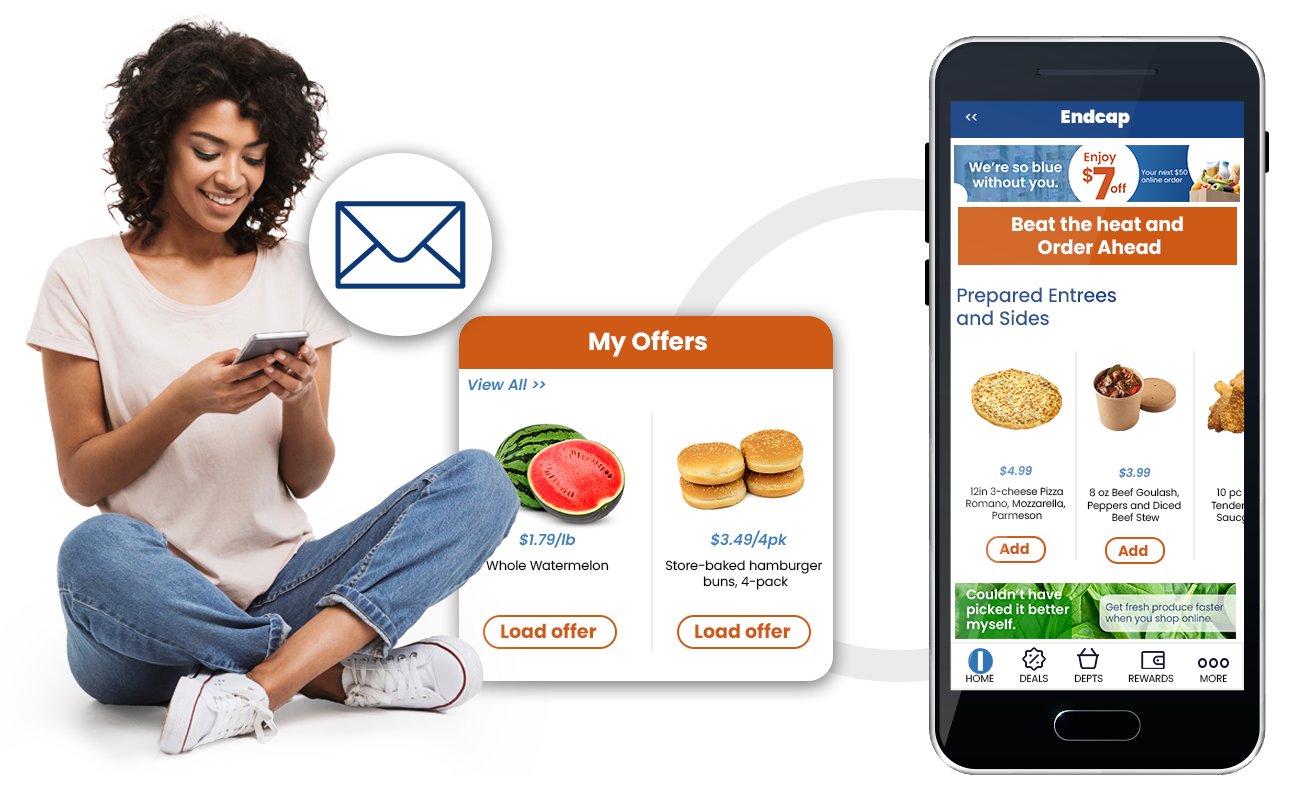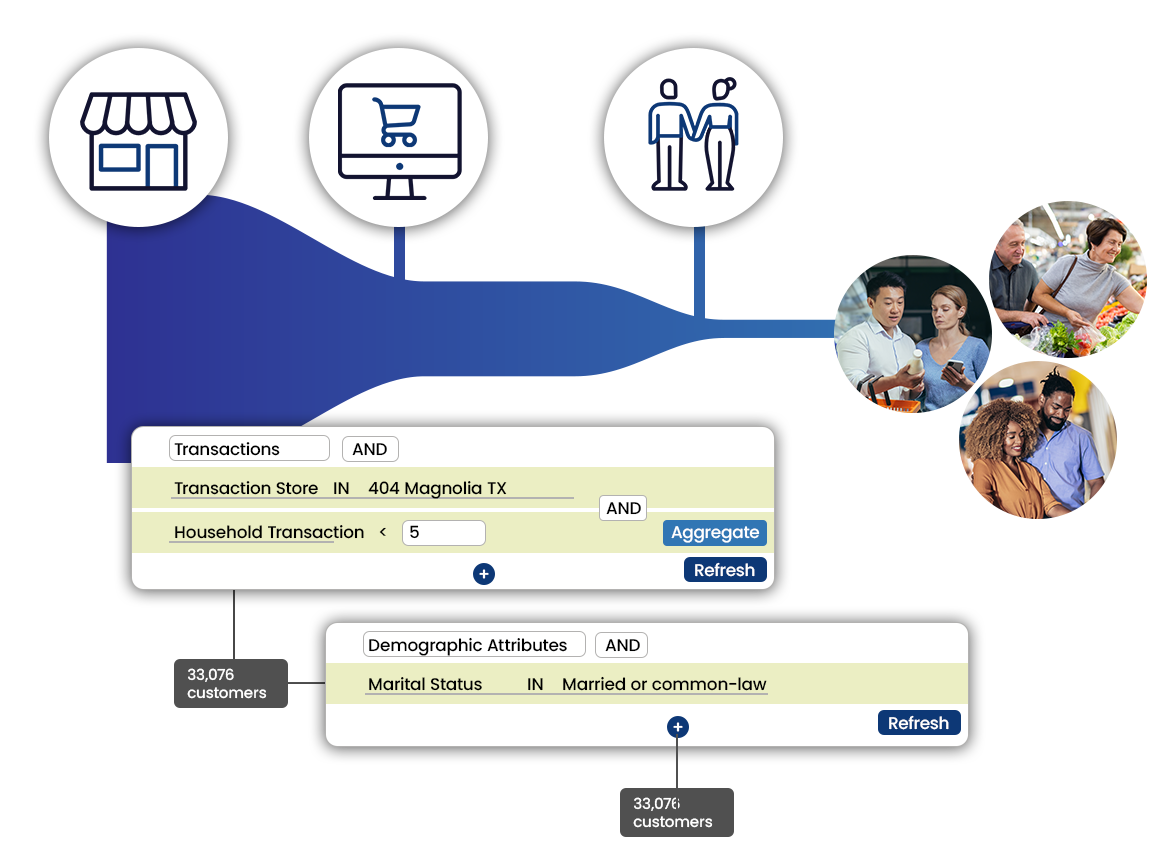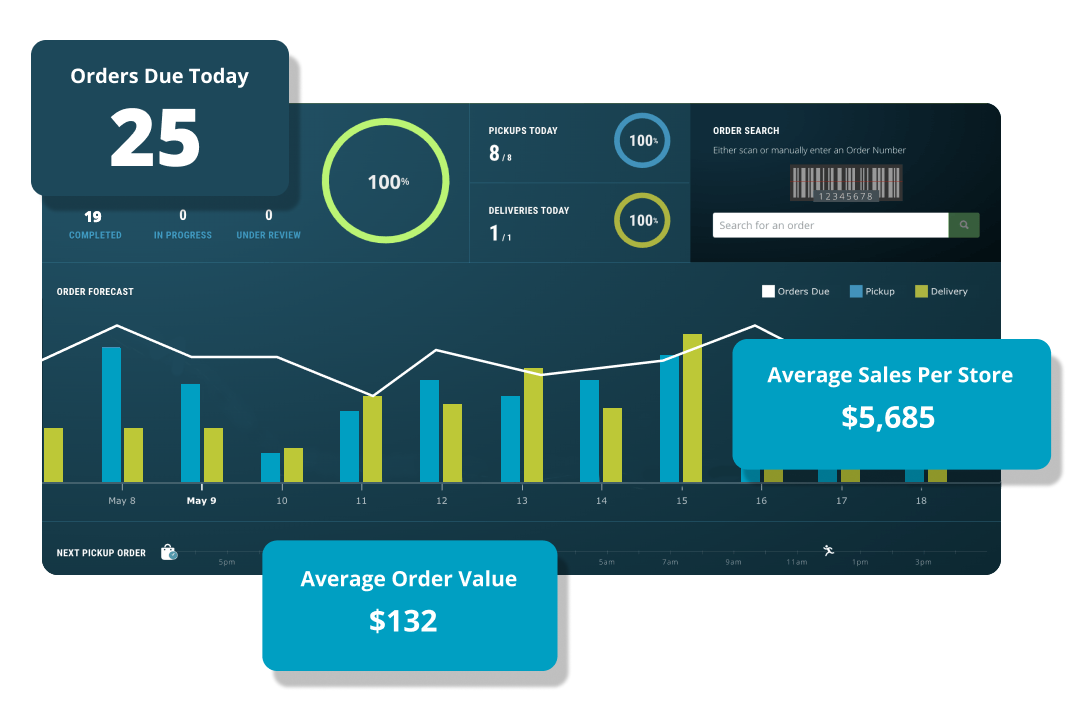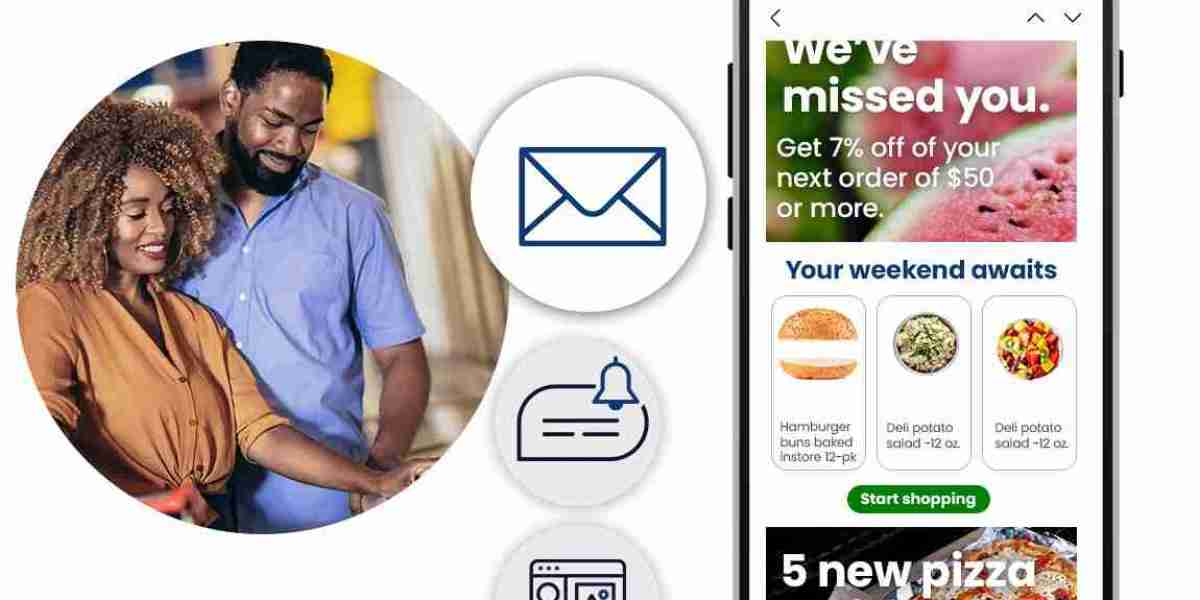Introduction
Grocery personalization is transforming the way grocery retailers interact with their customers, offering a more customized shopping experience. This innovative approach utilizes detailed insights from customer shopping habits, preferences, and behaviors to deliver personalized product suggestions, promotions, and discounts. By tapping into the power of data analytics, grocery stores can tailor their offerings to meet the individual needs of each shopper, enhancing customer satisfaction and fostering loyalty.
The benefits of grocery personalization extend beyond mere customer satisfaction; it also significantly impacts a retailer's bottom line. Personalized experiences encourage repeat business, increase sales, and elevate the overall shopping experience. As digital technology continues to advance, grocery personalization is becoming an essential component of retail strategies, allowing businesses to stand out in a competitive marketplace by delivering unmatched value and convenience to their customers.
How Does Grocery Personalization Enhance Customer Experience?
Grocery personalization shapes the shopping journey to specifically cater to the unique preferences and needs of each customer, significantly boosting engagement and satisfaction.
In today's competitive retail market, grocery personalization stands out as a crucial strategy. By leveraging detailed customer data, grocery retailers can create individualized shopping experiences that resonate on a personal level, setting the foundation for enhanced customer loyalty and increased sales.
Personalization in the grocery sector involves analyzing and acting on customer data to provide tailored shopping experiences. This approach not only simplifies the shopping process for consumers but also makes it more engaging and fulfilling.
Benefits of Personalized Shopping Experiences
Personalized shopping experiences offer several key advantages:
- Enhanced Relevance: Recommendations are customized, showing shoppers items that align with their tastes and previous purchases.
- Increased Value Perception: Promotions and discounts are personalized, making offers more relevant and elevating the perceived value of the shopping experience.
- Emotional Connection: Tailored interactions strengthen the emotional bond between the customer and the brand, fostering loyalty.
These benefits highlight the transformative power of personalized shopping experiences. When customers feel understood and valued, they are more likely to remain loyal to a brand, leading to increased customer retention and higher sales.

Key Components of Grocery Personalization
Effective grocery personalization is built on several foundational elements:
- Engagement Analytics: Tracks interactions across different channels, providing insights into customer preferences and behaviors.
- Predictive Modeling: Uses customer data to forecast future buying trends, enabling more precise and effective personalization.
- Real-Time Adaptation: Strategies are adapted in real-time, ensuring that personalization efforts are consistently relevant and engaging for each customer.
Integrating these components into a grocery retail strategy allows for a shopping experience that is not only personalized but also dynamic. It adapts to the evolving needs and preferences of customers, ensuring that the retail experience remains engaging over time. This approach to personalization is essential for retaining customers and driving business growth in the competitive grocery sector.
The Role of AI and Machine Learning in Personalizing Grocery Shopping
AI and machine learning are pivotal in driving grocery personalization, offering sophisticated tools that enable retailers to understand and predict customer behaviors and preferences with remarkable accuracy.
Grocery Personalization Algorithms
Grocery personalization algorithms utilize AI to analyze vast amounts of customer data, identifying patterns and preferences in their shopping habits. These algorithms are the backbone of personalized marketing strategies, enabling:
- Product Recommendations: By understanding each customer's past purchases and preferences, these algorithms suggest products that are likely to be of interest, enhancing the shopping experience.
- Behavioral Targeting: This approach segments customers based on their behaviors and preferences, delivering targeted marketing messages that resonate on a personal level.
These technologies ensure that customers receive relevant and timely suggestions, significantly improving the efficiency and enjoyment of their shopping experience.
Importance of Customer Journey Mapping
Customer journey mapping plays a crucial role in personalizing the grocery shopping experience. It involves:
- Understanding the Customer's Path: By mapping the journey, retailers gain insights into the various touchpoints where customers interact with their brand, from initial awareness to post-purchase.
- Identifying Opportunities for Personalization: Each touchpoint represents an opportunity to deliver a personalized experience, whether through customized product displays, tailored recommendations, or individualized communication.
AI and machine learning enhance customer journey mapping by providing the data and insights needed to make each interaction as relevant and engaging as possible. This not only improves the shopping experience but also strengthens the customer's relationship with the brand.
Integrating Personalization into Your Grocery Loyalty Programs
Integrating grocery personalization into loyalty programs significantly improves their effectiveness, encouraging repeat business and enabling deeper customer relationships. Personalized loyalty programs develop customer data to offer rewards and promotions that resonate on an individual level.

Loyalty Program Integration
Integrating grocery personalization strategies into loyalty programs involves:
- Rewards and Offers: By analyzing shopping patterns and preferences, retailers can create personalized rewards that motivate continued engagement and purchases.
- Segmented Communication: Personalization allows for communication tailored to different segments of the loyalty program, ensuring messages and offers are relevant and appealing to each group.
This level of personalization makes customers feel valued and understood, increasing their loyalty and engagement with the brand.
Boosting Real-time Offer Management and Cross-channel Marketing
Grocery personalization also opens the door to real-time offer management and cross-channel marketing within loyalty programs:
- Real-time Offer Management: Personalization enables retailers to dynamically adjust offers based on real-time data, ensuring that promotions are timely and relevant to each customer's current needs and preferences.
- Cross-channel Marketing: By integrating personalization across all marketing channels, retailers can ensure a consistent and personalized customer experience, whether the customer is shopping in-store, online, or through a mobile app.
This integrated approach ensures that every aspect of the loyalty program is optimized for individual customer engagement. Integrating grocery personalization into loyalty programs not only enhances the customer experience but also drives significant business value by fostering a loyal customer base.
Omnichannel Shopping Experience
Providing a seamless omnichannel shopping experience is essential for enhancing user engagement metrics. This comprehensive approach integrates the customer's journey across all available shopping channels, offering a consistent and personalized experience whether online, in-store, or through mobile platforms.
Significance of a Seamless Omnichannel Experience
The seamless integration of multiple shopping channels ensures customers have a unified and consistent experience, boosting satisfaction and loyalty. Key aspects include:
- Consistency Across Channels: Customers receive the same high level of service and personalization across all platforms, which is crucial for building trust and loyalty.
- Personalization at Every Touchpoint: Dragging data from various channels allows for tailored experiences that align with each customer's preferences and behaviors, significantly boosting engagement.
- Enhanced User Engagement Metrics: A cohesive omnichannel strategy improves important metrics like customer satisfaction, retention rates, and lifetime value, as customers who enjoy a seamless experience are more likely to become repeat buyers.
Incorporating these principles into an omnichannel approach ensures that every interaction with the customer is convenient, relevant, and engaging. It's about creating a cohesive journey that respects the customer's preferences and choices, ensuring they feel valued and understood regardless of how they choose to interact with your brand. This customer-centric strategy is key to driving long-term loyalty and finding a competitive advantage in the grocery sector.
Personalized Grocery Marketing Strategies
Effective personalized grocery marketing strategies play a pivotal role in engaging customers and driving loyalty. By focusing on customer segmentation and engagement, retailers can craft marketing initiatives that resonate deeply with their audience.
Exploring Effective Strategies
Key elements of successful marketing strategies for grocery personalization include:
- Customer Segmentation: Dividing the customer base into smaller segments based on shared characteristics, behaviors, or preferences allows for more targeted and relevant marketing efforts. This approach ensures that promotions and communications are tailored to meet the unique needs of different customer groups.
- Engagement Through Personalization: Customizing data analytics to understand customer preferences and purchase history enables retailers to send personalized offers and content.
Integrating these strategies within grocery personalization efforts ensures that every marketing message is relevant, timely, and likely to drive engagement. By acknowledging and addressing the unique preferences and needs of their customers, grocery retailers can significantly improve the impact of their marketing efforts, resulting in higher conversion rates, increased customer loyalty, and sustained business growth.

Overcoming Challenges in Grocery Personalization
Implementing grocery personalization strategies comes with a set of challenges. However, with the right approach, these obstacles can be navigated successfully to enhance the customer experience and drive loyalty.
Potential Challenges and Solutions
Several key challenges need to be addressed:
- Data Integration: Collecting data from multiple sources and integrating it into a cohesive system can be complex. Implementing robust data management platforms that can aggregate, clean, and analyze data from various channels is crucial for effective personalization.
- Privacy Concerns: Customers are increasingly wary of how their personal information is used. Retailers must prioritize transparency and consent, clearly communicating how data will be used and providing customers with control over their information.
- Technology Investment: Personalization requires significant investment in technology and talent. Retailers should consider scalable solutions that can grow with their business and seek partnerships or platforms that offer advanced personalization capabilities without requiring extensive in-house development.
- Balancing Relevance with Over-Personalization: Finding the right level of personalization without invading privacy or becoming intrusive can be challenging. Continuous testing and feedback loops with customers can help retailers find the balance between relevance and respect for privacy.
By addressing these challenges head-on, retailers can effectively implement grocery personalization strategies that meet the needs of their customers while respecting their privacy and preferences. Overcoming these obstacles not only enhances the customer experience but also positions the retailer as a trusted and innovative leader in the marketplace.
Future Trends in Grocery Shopping: The Rise of Personalization
As grocery personalization continues to evolve, future trends are set to offer even more sophisticated and intuitive shopping experiences. Advances in technology, particularly in predictive modeling and AI, will drive these changes, reshaping how retailers connect with their customers.
Advanced Predictive Modeling and AI-driven Personalization
Looking ahead, several key trends are expected to arise:
- Hyper-Personalization: AI and machine learning will enable even more precise personalization, predicting customer needs and preferences with unprecedented accuracy. This could mean personalized shopping lists generated automatically based on dietary preferences, past purchases, and even predictive analysis of needs.
- Seamless Integration Across Devices: As the Internet of Things (IoT) expands, personalized shopping experiences will extend beyond smartphones and computers to include smart appliances and virtual assistants, making grocery shopping more integrated into daily life.
- Enhanced Customer Journey Mapping: Future technologies will offer even deeper insights into the customer journey, allowing retailers to anticipate customer needs at every stage and touchpoint, providing timely and relevant personalization that enhances the shopping experience.
- Ethical AI and Privacy: With the increased focus on data privacy, AI systems will become more transparent and ethical, using data responsibly to personalize experiences without compromising customer trust.
These advancements in grocery personalization are expected to not only make shopping more convenient and enjoyable for customers but also foster stronger relationships between customers and retailers. The future of grocery shopping looks set to be more personalized, efficient, and connected than ever before.
Conclusion
Grocery personalization is rapidly transforming the retail landscape, offering tailored shopping experiences that meet the unique needs and preferences of each customer. The integration of advanced technologies like AI and predictive modeling is key to delivering these personalized experiences, enhancing customer satisfaction, and driving loyalty. Looking to the future, grocery personalization is set to become even more sophisticated, with emerging trends promising to make the shopping experience more intuitive and integrated into our daily lives. Grocery personalization stands at the forefront of retail innovation, promising a future where grocery shopping is not just a necessity but a personalized journey that delights and surprises at every turn.
Frequently Asked Questions
What is grocery personalization, and how does it work?
Grocery personalization involves using data about a customer's shopping habits, preferences, and behaviors to create a shopping experience tailored to their individual needs. This can include personalized product recommendations, promotions, and content delivered through various channels such as email, mobile apps, and in-store displays.
How can grocery stores collect and use customer data responsibly?
Grocery stores can collect customer data responsibly by adhering to data privacy laws, obtaining explicit consent from customers, and ensuring transparency about how data is used. It's crucial to implement robust security measures to protect customer information and provide options for customers to control their data, including opting out of data collection.
What are the benefits of grocery personalization for both retailers and customers?
For customers, grocery personalization offers a more convenient and satisfying shopping experience, with tailored recommendations and offers that save time and enhance discovery. For retailers, personalization drives increased engagement, customer loyalty, and sales, as personalized experiences encourage repeat visits and larger basket sizes.
How does personalization affect customer loyalty in the grocery sector?
Personalization significantly impacts customer loyalty by making shoppers feel valued and understood. Tailored experiences foster a positive emotional connection to the brand, increasing the likelihood of repeat purchases and long-term loyalty. Additionally, personalized rewards and offers within loyalty programs further incentivize continued engagement with the grocery retailer.



